30 Types of Arches, Modern & Historical, Visually Displayed
Author: Rick Worst | Editor: Omar Alonso
Review & Research: Jen Worst & Chris Miller
There are quite a few types of arches, and that's largely because the arch is a design element that has been around for thousands of years. While it is not used so much in everyday construction, it lends itself to a certain charm that some spaces command.
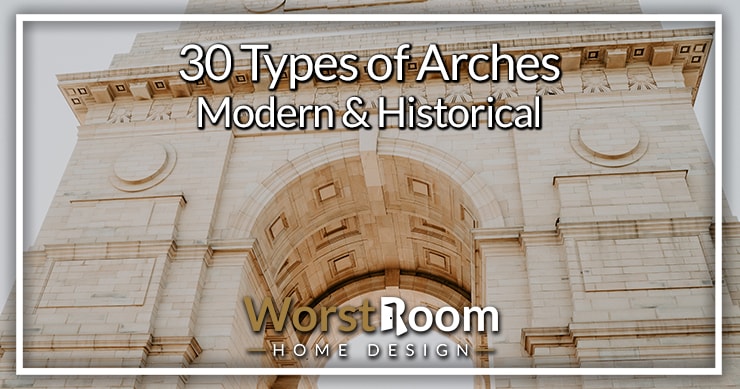
Functionally, an arch is used to support loads from above and distribute them evenly. It is an integral part of the architecture of opening into different spaces.
An arch could be a semi-circle or a segment or pointed or even non-circular. In fact, arches can be distinguished from one another based on shape, number of centers, and the materials used in the construction, etc.
The various types of arches are beautiful building elements that can be presented in many different forms. Here are the most important of them for you to recognize, first based on shape and then based on number of centers.
Types of Arches Based on Shape
There are the 18 most popular and interesting arches based on shape, found in the modern world and throughout architectural history.
Flat Arch
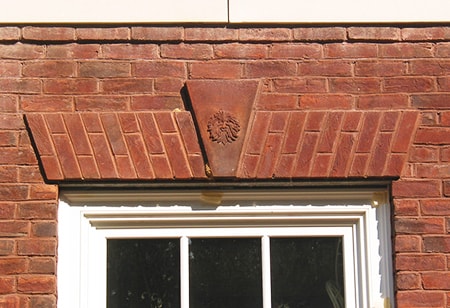
Most people often don’t notice these because a curve is at the core of the idea of an arch. But flat arches are a thing. They are the base of a triangle, often formed by a horizontal angle.
There is a rise of about 15 millimeters per meter in width and the opening gives you space for tiny settlements. These are popularly used to hold a lighter load like above a window, but can bear much more weight thanks to an arcade of arched supports and a colonnade of regular pillars.
These often feature a cresting or cornice, which are horizontal strips of molding that are either hand-carved or casted in the present time as a decorative measure to hide the flat arch portion of the support system. Who knew crown molding alternatives could bear weight?
Roman Arch
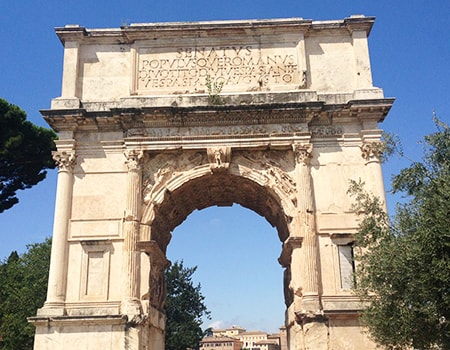
This is probably the most popular type of arch. It is well known in architecture and the design can be often spotted. It is a perfect semicircle with two posts or columns supporting it. This is the round arch seen on the big graphic above.
These types of columns are usually made of wood or stone. But in the recent past even drywall and plaster boards are being used to create columns for roman arches.
The design is quite simple and that’s what gives it an elegant look. It works best with rooms that have a high ceiling.
An antefix is often added as an ornament along the eaves near the roof that help hide the unsightly joints. You often see an architrave, frieze, and cornice forming a continuous lintel on the entablature, helping to further decorate the pillars.
These may look simple but are often decorated with beautiful dentils and crockets along the outer eaves of the arches and the gables and pinnacles involved.
Art Nouveau Arch
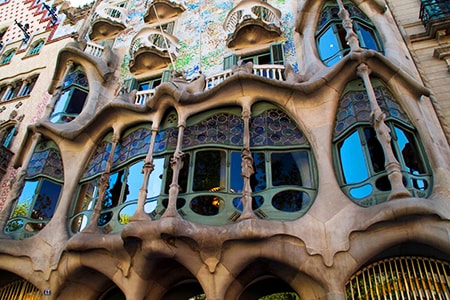
This is also called a segmental arch and is a basic and shallow kind of arch. It is elongated and has curved corners. So, this is the opposite of a Roman arch in the sense that it works well for rooms with a low ceiling.
It is also called a segmental arch because it is formed as a segment of a bigger circle. The curved corners are segments of smaller circles in the end. A shallow segment arch is a variation of the Art Nouveau curve and it does not have curvy corners.
This is a popular design in modern architecture because it is easier in terms of construction and has design flexibility. These arches can be constructed without columns and are excellent partition tools without eating up space.
These are kind of "freestyle" in the sense that you'll find some featuring a balustrade, bay windows, bows of various radius lengths, brackets, and more. I saw one the other day featuring a miniature bellfry. They almost always feature a decorative frontispiece facade full of grilles, figurines, and other elements set within the tympanum.
You often see this kind of post-modern arch in various mega mansions that haven't opted for the modern, minimalist style of architecture.
Tudor Arch
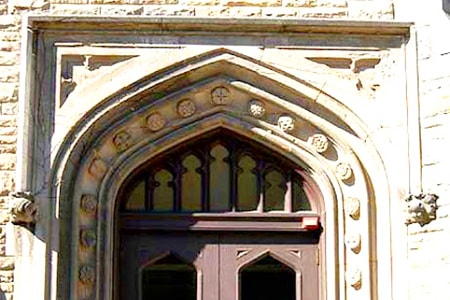
This is quite similar to the Art Nouveau except it has a wide but shallow arc. It also has a greater width than height which makes it look like it has been flattened. This is your typical four-centered arch.
These arches are great for rooms that have a large and low ceiling, allowing for decorative and load-bearing aspects when there would otherwise not be room.
Gothic Arch
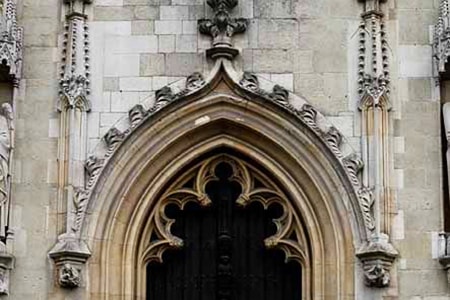
This is a popular design from the middle ages. So you will actually see a lot of this model if you pay attention to European cathedrals. They have a sharp and pointed top.
The place where both arcs meet is right in the middle and they extend down to look tall. Gothic arches look great only in rooms with high ceilings so that the tall arches don’t look crammed in.
These often feature pilasters, which are columns where the pillar and base are set into the wall in which they support. You may even see a gargoyle perched atop if you're lucky and a turret or two.
Lancet Arch
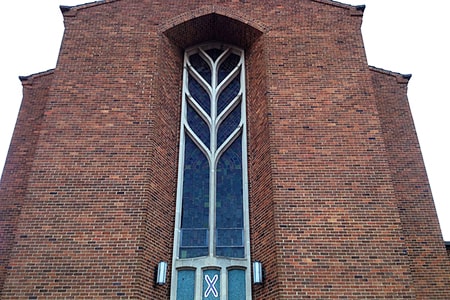
This is a pointed arch design that was developed during the Gothic period. It is narrow and pointed towards the top.
If you get a chance, you must look for it on roof structures and windows of cathedrals and churches. You'll definitely find them now that you know how to identify them.
Camber Arch
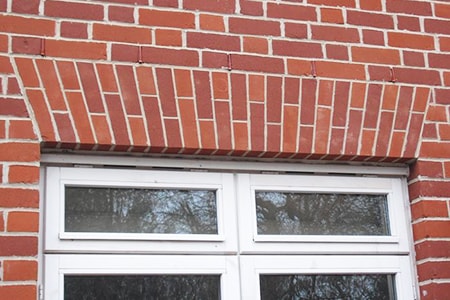
It is also called a jack arch and it is similar to a lintel. It is almost or absolutely flat but the voussoirs, which are stones used to construct the shape of the arch, are used for their strength just like in a regular arch.
Semi-Circular Arch
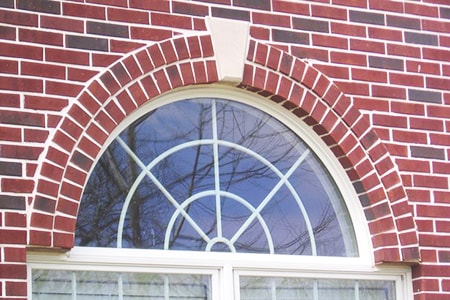
This arch looks like a semi-circle and the thrust is vertical while the skewback is horizontal. In this design, the center is exactly on the springing line. A springing line is the horizontal line between the dome and the springs of the arch.
You see these the most in the different types of houses in the suburbs and in commercial buildings around town.
Horseshoe Arch
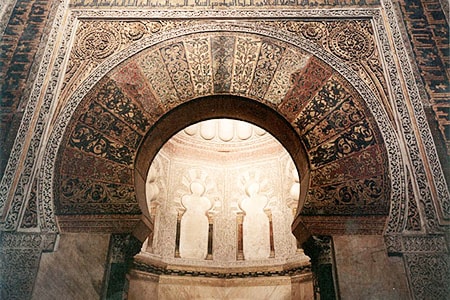
This is, as the name suggests, in the shape of a horseshoe with a little more curve than the semi-circle arch. It is largely preferred to make architectural provisions.
Pointed Arch
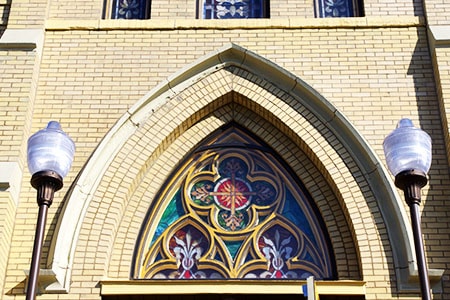
This is another version of the Gothic arch. In this, however, the two arcs of two circles meet at the top forming a triangle. And the triangle could be equilateral or isosceles.
Venetian Arch
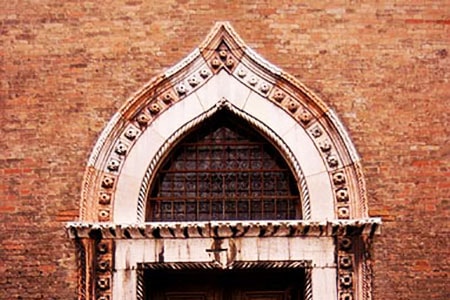
This is a pointed arch design with a crown that is deeper than most others. It actually has four centers which are all placed on the springing line. These are often of the Ogee arch type, but not always.
Florentine Arch
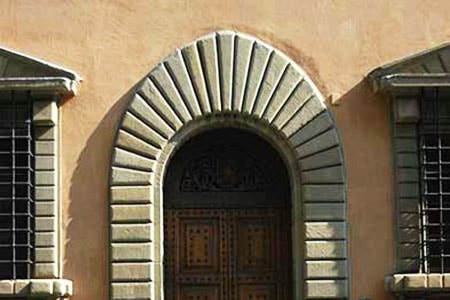
In this design, the inner curve of the arch is in the shape of a semi-circle while the rest of it is similar to a Venetian arch. So this is kind of a hybrid. It has three centers and they are all located on the springing line.
Relieving Arch
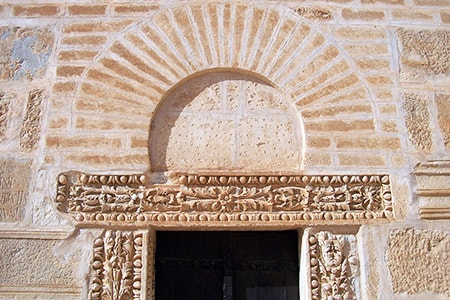
This is a design that is constructed on top of a flat arch. It is done by using a wooden lintel that helps provide extra strength. When the wooden lintel decays, it can be replaced quite easily without causing any structural disturbance.
Stilted Arch
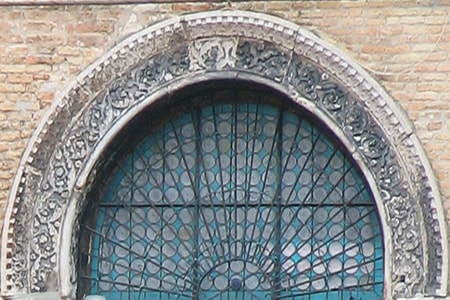
A stilted arch is also kind of a mix of two other designs. It has a semi-circular arch. There are two vertical points on the springing line. The center is on the horizontal line that goes through the vertical portions.
Semi-Elliptical Arch
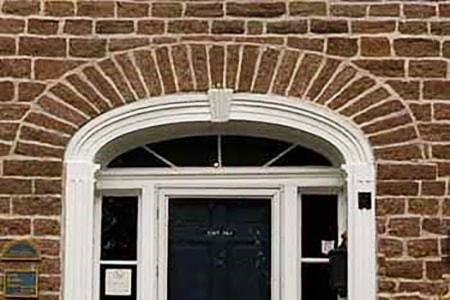
This looks like half of an ellipse and has three or five centers depending on the architect. They aren't visually remarkable but get the job done spectacularly.
Parabolic Arch
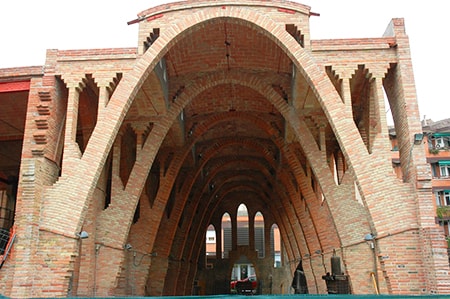
The idea here is to have a uniform load from the top. The internal compression is used to create the parabolic curve which gives the arch the final shape.
These arches have the most thrust at the bottom or the base. But they also have a great deal of distance between the end of the arch. So they are quite a popular choice when designing bridges.
Catenary Arch
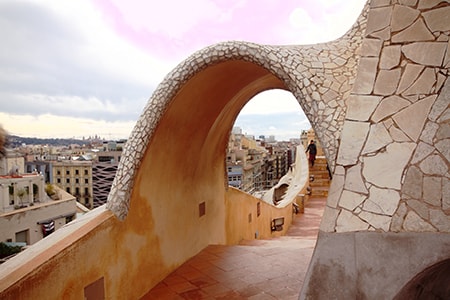
This one is similar to the parabolic arch except it is a bit flatter towards the bottom and it rises a lot faster than the parabolic arch. It uses the compression force created out of its own curve.
So, it gets pulled into shape when hanging and it can support itself when it is standing. The Gateway Arch in St. Louis, Missouri which is possibly the most popular arch in the US is a good example.
Ogee Arch
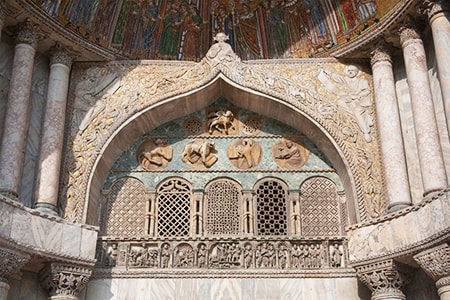
This is an s-shaped arch with two arcs that help keep the ends parallel. It is called so because the arch has two ogees with perfect symmetry meeting at the top in a point. It was quite a popular design in 13th century English architecture.
Types of Arches Based on Building Materials
Typically, there are only four building materials used in arches throughout history, becoming stronger and more sophisticated as time progressed. Those are stone, brick, concrete, steel (and concrete alternatives can be swapped in).
Stone Arches
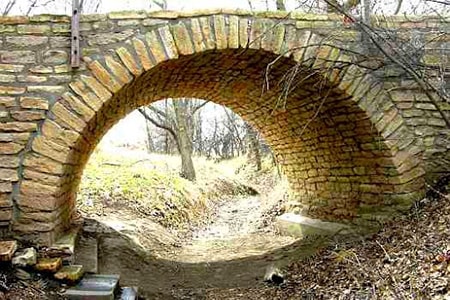
In ashlar arches, the stones are cut into shape, rendering them into the tapered wedges known as voussoirs. Ashlar refers to the blocked shape of the rectangular stones used in the pillars.
In the past, weaker rubble arches were created without shaping the stones first. They were built with randomly shaped stones, joined together with rudimentary cement.
These are weak and not used in modern times. Historical rubble arches have been preserved and reinforced since their ability to maintain large loads over long periods of time is low and too much of a liability presently.
Brick Arches
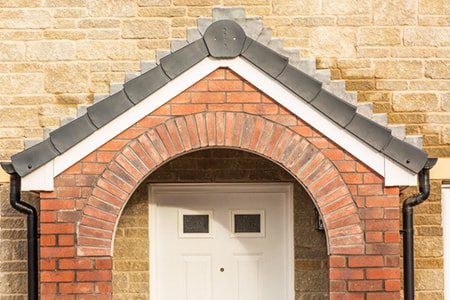
There are three main types of arches made from bricks as the main building material. They can come in any of the shapes above. The styles below are more about the construction method itself. You'll see these in many modern types of mansions as well as older structures in downtown areas.
Rough Brick Arches
Rough brick arches aren't very attractive and are typically only used internally where the brick isn't exposed to visitors.
The bricks are thicker on the outer portion of the arch (extrados) and thinner at the inner part (intrados), but not cut to exact specifications. They still perform well but are unsightly.
Gauged Brick Arches
As described by the name, the soft bricks here are gauged to exact specifications for the voussoir elements of the arch, often cut with a wet saw or wire saw. Time is often taken to decorate these bricks and are a sign of true craftmanship.
Axed Brick Arches
You can think of these as the same as gauged brick arches but the bricks are less finely produced to shape. They're cut with a brick axe and are a bit more rough in appearance, with gaps and pits filled with lime putty when the bricks are placed.
These can be spruced up using the flemish bond method of alternating bricks in orientation, so that the pattern follows a repeating layout of a length-wise brick and a then one turned 90 degrees so the short end faces forward.
Concrete Arches
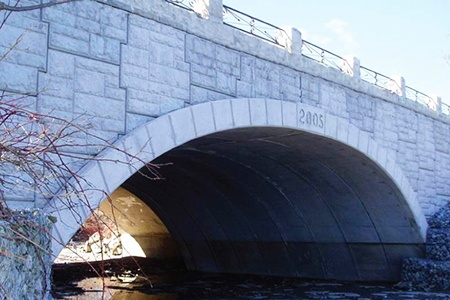
Concrete is used for fairly large arches, like those used to support interstate overpasses. They can support large spans due to the strength of concrete and the steel rebar that runs within it. The concrete must be formed into shape around the rebar and allowed to cure for around a month.
There are also pre-cast types of concrete blocks that can be used and moved into place with cranes. The skewbacks, voussoir, and key stone are all carefully created using molds. The resulting arch is a beauty (until people hit it with graffiti).
Sometimes you'll see them mixed with color pigments to imitate the look of brownstone and other older materials, even various types of stucco.
Steel Arches
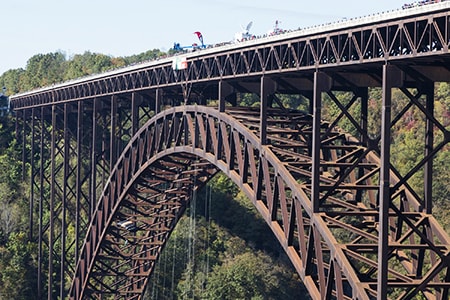
Steel arches are the strongest types of arches, easily the most durable and flexible in size and shape. You see these on large bridges across water, often supported by cables that help distribute the weight evenly.
Types of Arches Based on the Number of Centers
The aforementioned descriptions make it clear that a single arch can have more than one center. And that is the second way to distinguish one arch from the other.
Centers for stone or concrete arches are constructed in a similar fashion. Arches made of stones and concrete are heavier and have centers that need to be really strong.
For concrete and reinforced concrete arches, the centering serves a mould to shape the arch ring and spandrel walls. Let’s take a look.
One-Centered Arches
Segmental, semi-circular, flat and horseshoe arches are just some examples of one-centered arches. In fact, you can have a perfectly circular arch with circular windows and that is called a bull’s eye arch which is also a one-centered arch.
Two-Centered Arches
Next, of course, is when you have two centers on the springing line. Pointed arches and gothic arches fall in this category.
Three-Centered Arches
This is where it gets exciting. Semi-elliptical arches and Florentine arches have three centers on the springing line. These are similar to segmental arches but the extra center gives it an elliptical look.
These are less common but still important when it comes to renovating period spaces. They need a little more support so that the thickness of the wall including the inner leaf can be well supported. You should also consider getting wall lintels.
The three-centered arch works great with a semi-circular arch if the height is over a wide window. These are strong and found in bridge designs.
Four-Centered Arches
Venetian and Tudor arches are an example of four centers on the springing line. These have a depressed arch which is low and wide with a pointed top or apex. It is a staple of English architecture.
Five-Centered Arches
Arches like semi-elliptical which are designed with attention to detail can have as many as five centers.
The 30 Main Types of Arches
In their most general form, removed from historical and cultural context, we have 30 main types of arches that are architecturally sound and capable of bearing great loads. Below are those represented in graphical form, using computer aided design (CAD) with their geometrical names:
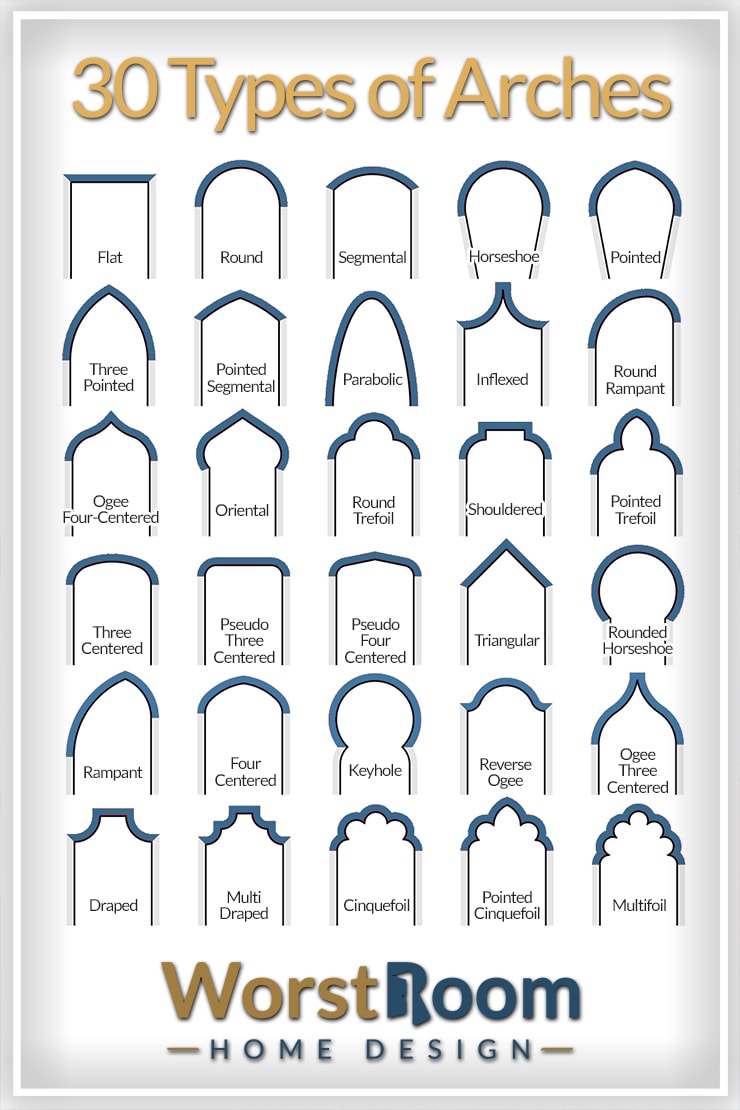
Above we talked about the most important of those 30, labeling them as they are actually discussed within the drafting, architecture, and history communities.
That's All You Need to Know About the Types of Arches
When you look at a beautiful architectural structure, the arch is one of the first things you notice. Whether you are looking at an old cathedral or a bridge, when it comes to designing exteriors, it can be safe to say that these openings add elegance and charm to all spaces.
Now that you can visually recognize the various types of arches, try to spot them when you're out and about, whether near churches, in an old downtown area, or especially if you travel out of the states into older countries.
You'll Also Enjoy:



